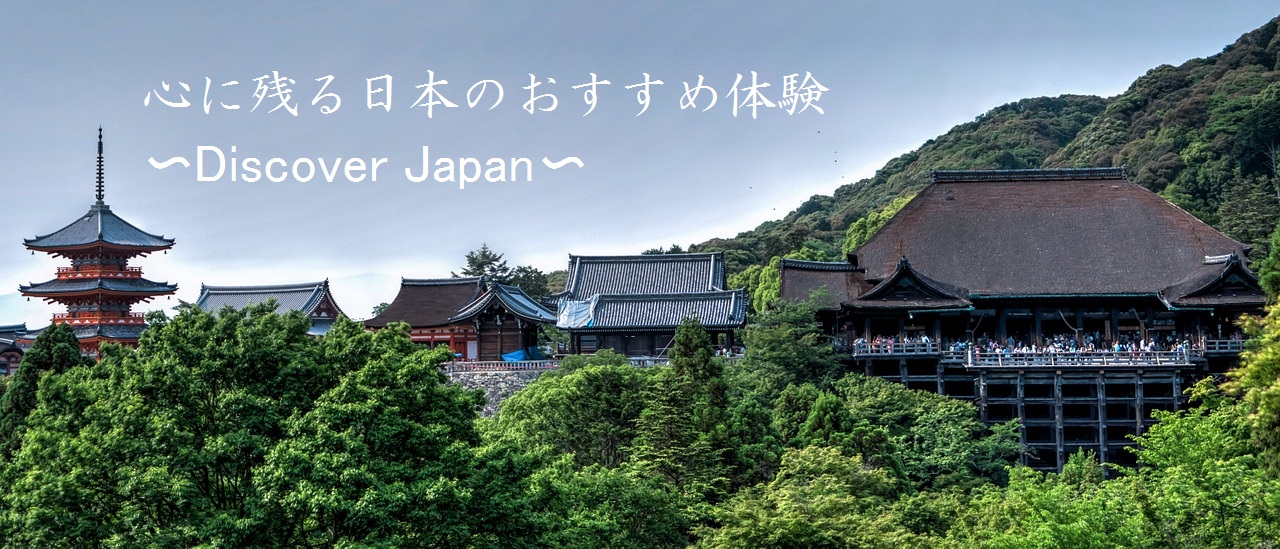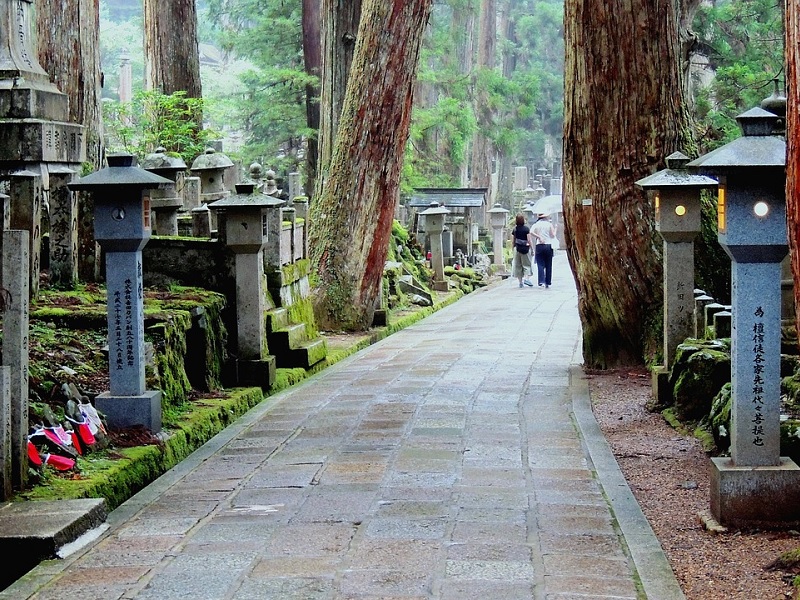

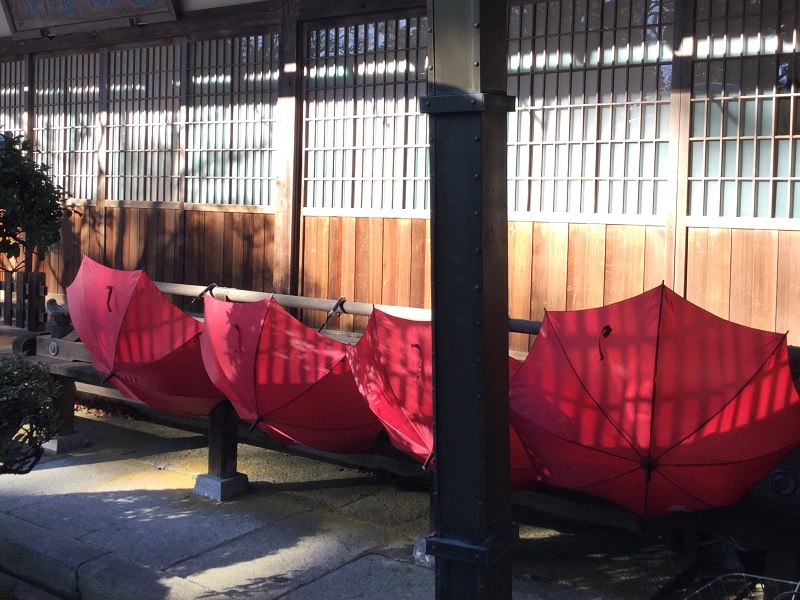
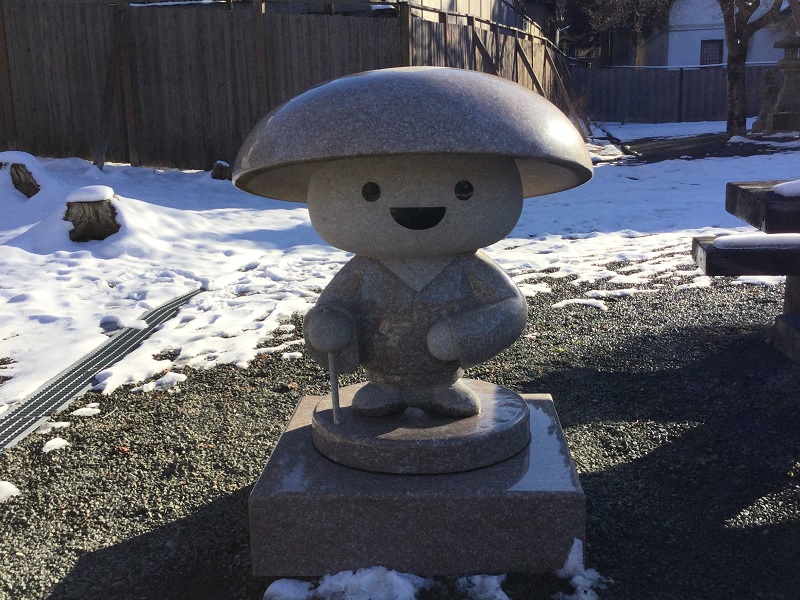

Shukubo (temple lodging) of Koyasan
Koyasan was opened in AD 816 of about 1200 years ago from now by Kukai (Kobo Daishi) as the land of ascetic practicesthe of Shingon esoteric Buddhism. Currently, there are 117 temples, 52 temples of them have Shukubo (temple lodging). It is located at the top of mountain of north Wakayama, and takes about 1 hour and 45 minutes by direct bus from Kansai Airport (limousine bus).
Two major holy sites of Koyasan is Okunoin and Danjougaran. In Okunoin, there are more than 200 thousands tombs and memorial towers . The approximate 2km approach from the entrance “Ichinohashi” to “Kobo Daishi Gobyo” is surrounded by high cedar trees. As visitors enter more and more depth, they become to have sacred feelings. In addition, there are many memorial towers of historical person such as Nobunaga Oda and Hideyoshi Toyotomi, they make many people feel a historical romance, regardless of age or sex.
The Shukubo has many kind of Buddhist experiences such as Morning religious service (Buddhist ceremonies at temples), Shakyo (the hand-copying of sutras), Shabutsu (the tracing a figure of Buddha), Ajikan (the form of Shingon meditation for integrating the practitioner with the Buddha) for guests, so you can experience the extraordinary. Recently, foreign tourists increase, so inbound measures such as English correspondence is being promoted. There is a temple where the barrier-free equipment is furnished, the elder and the disabled can stay with an easy mind. There is also a Shukubo that support the use of a large number of people, such as employee training and training camp.
In Syukubo, there are many things, you want to examine or hear about origine, such as the garden and the principal image of Buddha which are designated as the important cultural property of the country, the building and the picture by former experts, the imperial chrysanthemum and the lantern painted Sanada clan’s Rokumonsen or Tokugawa clan’s Mitsuba Aoi.
In this site, we introduce information to help those who are thinking of staying in Shukubo of Koyasan. you touch the charm of Shukubo even a little, we hope to help.
Fukuchiin
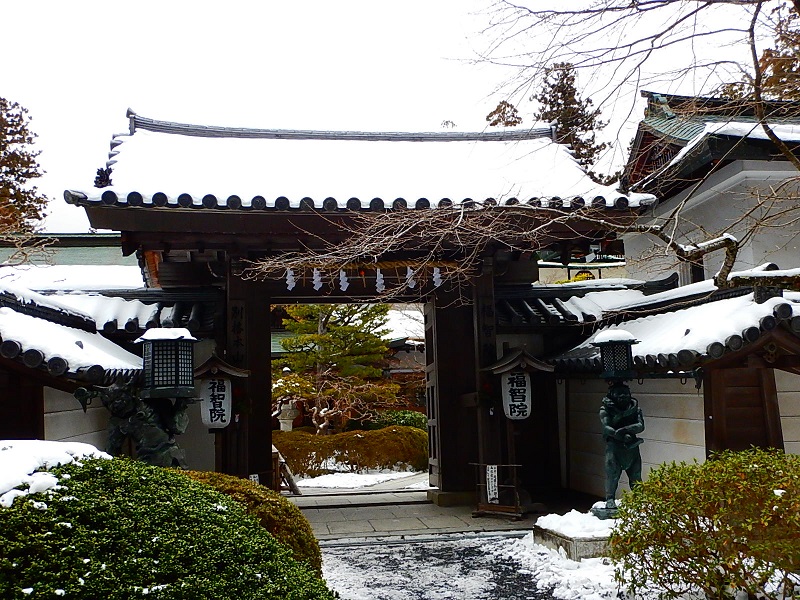
The only temple in Koyasan that can use natural hot springs
A large temple with a site of 5000 tsubo (16,529㎡). The two statues placed in front of the gate will greet visitors. In the temple, there are three different gardens by famous gardener, Mirei Shigemori, giving the visitors comfortable peace of mind. The Homotsu-kan (treasure hall) holds antique art items of the Nara period and relics of Ii Tairo (chief minister), some of which are exhibited in the lobby. It is also famous as an only temple in Koyasan that can use natural hot springs.
| Address | 657 Koyasan, Koya-Cho, Ito-Gun, Wakayama 648-0211, Japan |
|---|---|
| Phone number | 0736-56-2021 |
| Room | 66 guests rooms, 1 large hall, 4 medium halls |
| Capacity | 180 individual guests, 250 guests in group |
| Facilities | Main hall, Garden, Tea room, Hot spring, Open-air bath, Sauna, Western style toilet |
| Experience | Morning Religious Service (Buddhist ceremonies at temples), Shakyo (The hand-copying of sutras), Ajikan (The form of Shingon meditation for integrating the practitioner with the Buddha)(Reservation required, It costs money), Shabutsu (The tracing a figure of Buddha), The making Buddhist rosary beads (Reservation required, It costs money) |
| Photo |
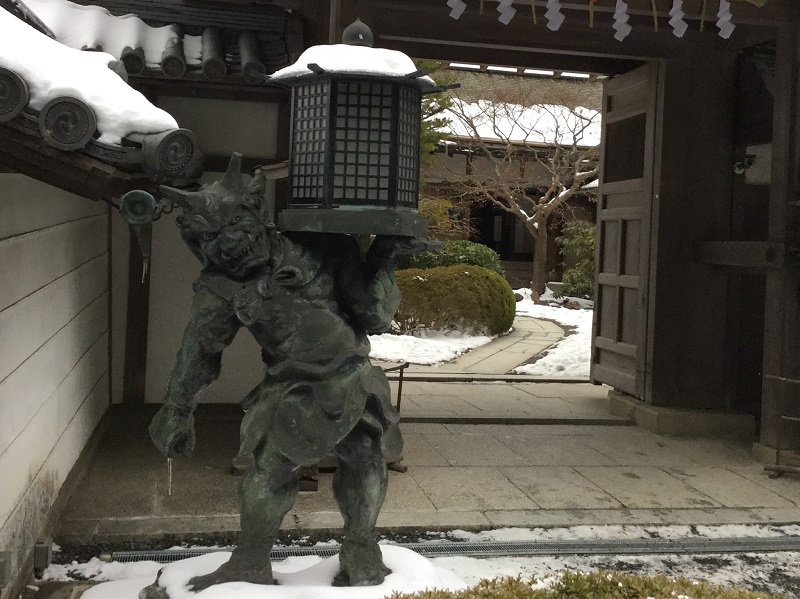 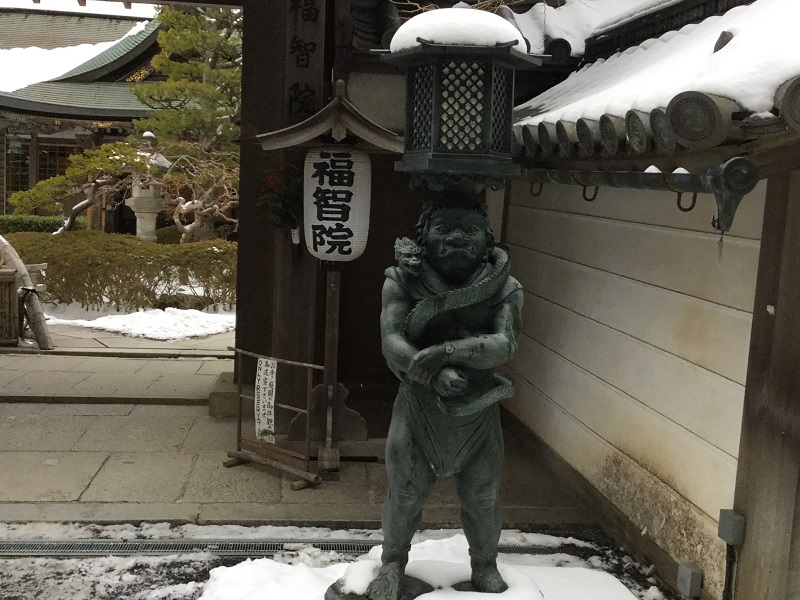 |
| URL | https://www.fukuchiin.com |
| Reservation | ー |
Fumonin
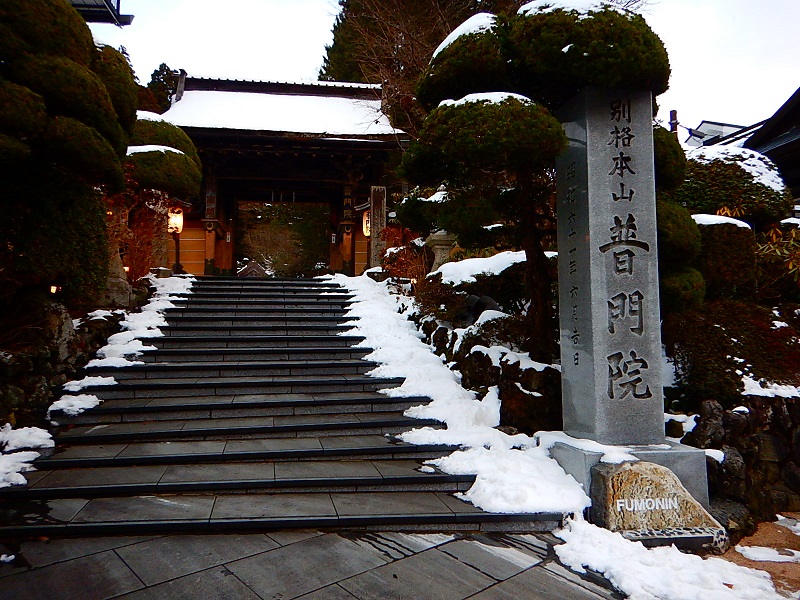
The best garden in Koyasan by Enshuu Kobori
It is also called “Teacher Temple” as another name. This is derived from a story based on tradition that the great teacher called Gonzou who is a teacher of Kukai is pleased with his disciples’ success and visited Koyasan to build this temple. After burning down in the Meiji Great Fire (1888), the Tokugawa’s mausoleums in Koyasan havs been relocated as this temple’s main hall. Therefore, the ceilings and fittings etc. are decorated with ‘Mitsuba Aoi’ family crest. The principal image of Buddha is called Dainichi Buddha of Fumon Manzoku, which is the origin of the name of this temple. The garden is said to be the work of Enshuu Kobori involved in landscaping such as Katsura Rikyu and Sen-dong Imperial Palace, and is It is the best scenic spot in Koyasan. The room used for lunch is setted up the Fusuma picture (the picture painted on a sliding paper door) that reproduce Daigo’s Cherry-blossom viewing performed by Toyotomi Hideyoshi (the chief adviser to the Emperor). Please take a look at a princess painted in the Fusuma picture when staying.
| Address | 608 Koyasan, Koya-Cho, Ito-Gun, Wakayama 648-0211, Japan |
|---|---|
| Phone number | 0736-56-2224 |
| Room | 19 guest rooms, 1 large hall, 1 medium hall |
| Capacity | 30 individual guests, 80 guests in group |
| Facilities | Main hall, Garden, Tea room, Western style toilet, Elevator |
| Experiences | Morning Religious Service (Buddhist ceremonies at temples), Shakyo (The hand-copying of sutras)(Reservation required) |
| Photo | |
| URL | http://www.fumonin.or.jp |
| Reservation | Rakuten Travel |
Kongosanmaiin
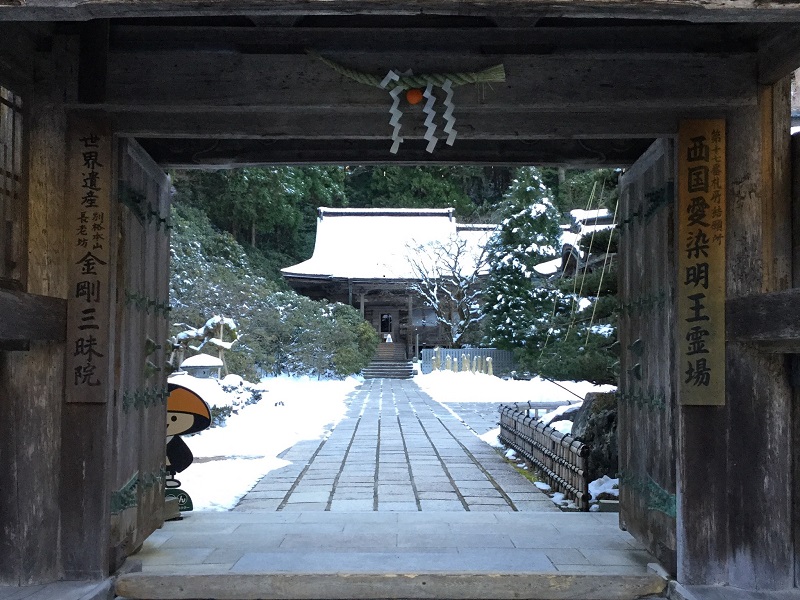
The pagoda which is the oldest wooden building existing in Koyasan
This temple is that Hojo Masako built for her hasband, Minamotono Yoritomo, and her son, Sanetomo. After that, the temple received a deep devotion by Ashikaga clan who opened Muromachi shogunate and Hojo clan. There is a copper bell which is an important cultural asset of the countr at the entrance gate. The Tahoto pagoda of the National Treasure is the oldest wooden building existing in Koyasan and it is said to be the second most old tower in Japan. (It is said that Ishiyama temple in Shiga prefecture is the oldest tower in Japan). It is said that the principal image of Buddha is Aizen Myou which expresses life – sized Yoritomo, will bring a luck regarding safe childbirth, love affair, thriving (prosperous) business, etc.
| Address | 425 Koyasan, Koya-Cho, Ito-Gun, Wakayama 648-0211, Japan |
|---|---|
| Phone number | 0736-56-3838 |
| Room | 63 guest rooms, 1 large hall, 4 medium halls |
| Capacity | 150 individual guests, 200 guests in group |
| Facilities | Main hall, Garden, Western style toilet |
| Experience | Morning Religious Service (Buddhist ceremonies at temples), Shakyo (The hand-copying of sutras), Ajikan (The form of Shingon meditation for integrating the practitioner with the Buddha) |
| Photo | |
| URL | http://www.kongosanmaiin.or.jp/temple_lodging |
| Reservation | ー |
Saimonin
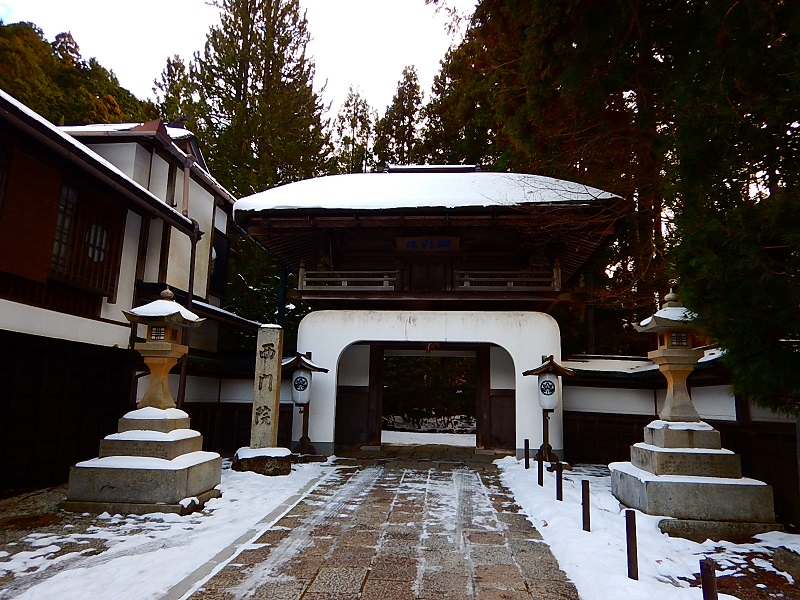
Koyamaki, 200 years old, which is the largest in Koyasan, welcomes you
This temple was opened about 900 years ago by a priest, Kyoukai . Originally called “Syakain”, it began to be called “Saimonin”, naming after Nishinakamikado who is the empress of Gohorikawa emperor at the Kamakura period. Located in the center of Koyasan, it is convenient for sightseeing. It can also be used as a lodging house for schools and the public. When you passes through Ryugu gates whose white wall is distinctive, Koyamaki, 200 years old, which is the largest in Koyasan, welcomes you. In addition, the precincts are filled with plants that make visitors’ eyes pleasant in accordance with the seasons such as cherry blossoms, rhododendrons and autumn leaves. The special sesame tofu served for dinner is popular with guests as a delicious dish.
| Address | 447 Koyasan, Koya-Cho, Ito-Gun, Wakayama 648-0211, Japan |
|---|---|
| Phone number | 0736-56-2031 |
| Room | 39 guest rooms, 1 large hall, 1 medium hall |
| Capacity | 80 individual guests, 100 guests in group |
| Facilities | Main hall, Garden, Western style toilet |
| Experience | Morning Religious Service (Buddhist ceremonies at temples), Shakyo (The hand-copying of sutras)(Reservation required) |
| Photo | |
| URL | http://www.saimonin.com/index.html |
| Reservation |
Fudoin
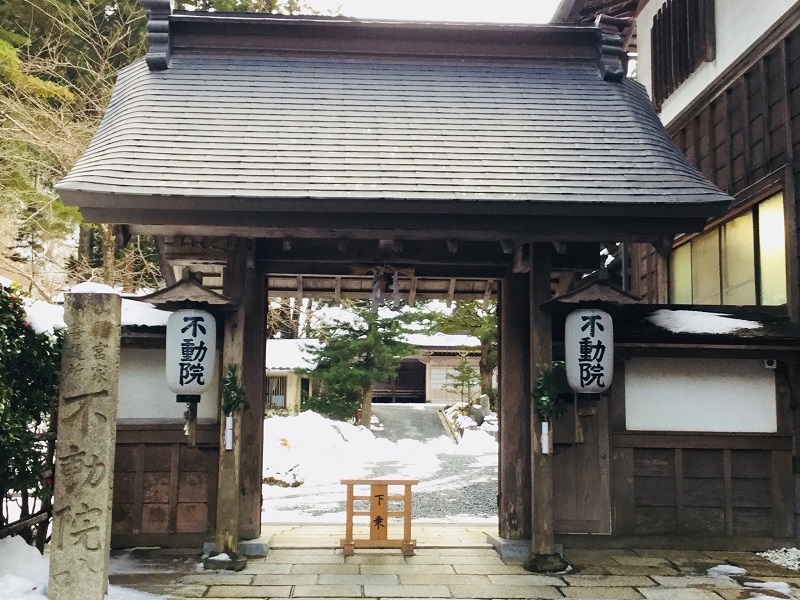
You can eat in the room built in the Azuchi-Momoyama period
This temple was opend in 906 by Saikou. Here is the family temple of the Yamashinanomiya clan, and has a deep connection with the Imperial family. The principal image of Buddha whichi is a secret Buddha is Fudo Myoo that is said to be maken by Kukai. A calm healing space where you can hear a pin drop spreads after a long long slope to the gate. The garden (Kissentei) is a work by Japanese famous artist, Mirei Shigemori. Hanakaido blooming in early May gives a gorgeous atmosphere to the entire garden. The kitchen called “Kuri” that was built in the Azuchi-Momoyama period is currently used as a dining area, and the devoted cuisine served there, including the freshly cooked dishes, is tasty and popular. The inside of the accommodation is two stories, and all the rooms are equipped with a toilet.
| Address | 456 Koyasan, Koya-Cho, Ito-Gun, Wakayama 648-0284, Japan |
|---|---|
| Phone number | 0736-56-2414 |
| Room | 27 guest rooms, 1 large hall, 1 medium hall |
| Capacity | 50 individual guests, 120 guests in group |
| Facilities | Main hall, Garden, Western style toilet |
| Experience | Morning Religious Service (Buddhist ceremonies at temples), Shakyo (The hand-copying of sutras), Homa prayer |
| Photo | |
| URL | https://www.fudouin.or.jp/index.html |
| Reservation | Rakuten Travel |
Sanboin
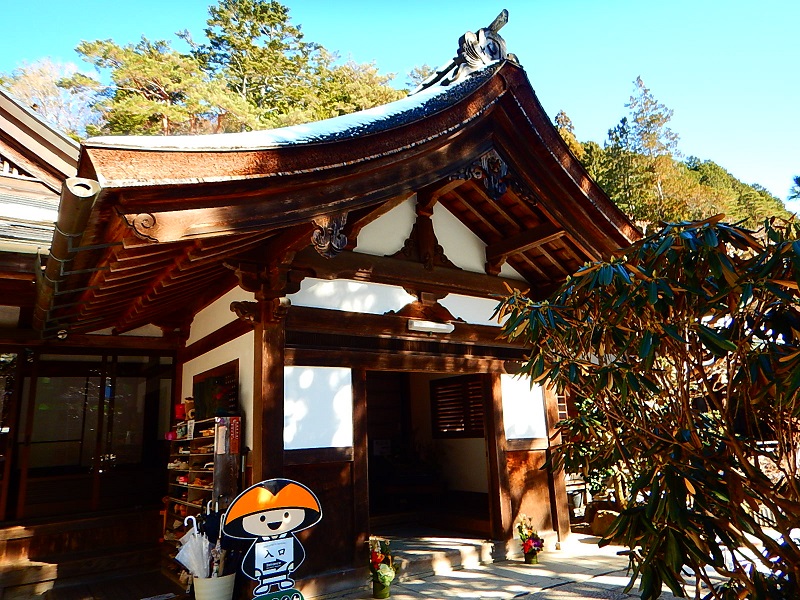
The temple built by Kukai’s mother
This temple was built by Kukai’s mother, Tamayori gozen. Sambo (three tresure) means Buddha (Buddha statue), law (scripture) and monk. In the main hall there is the statue of Kitamukino Daishi made by Unkei which is said to be the appearance of Kukai, and you can see it at morning religious service. The gurden has many things to delight the visitor’s eye such as waterfall, pond and Nishikigoi swimming in it . It is also famous as a temple for the mass for child, and Mizuko Jizo (the guardian deity for the spirits of miscarried childrenis) enshrined in the precinct.
| Address | 580 Koyasan, Koya-Cho, Ito-Gun, Wakayama 648-0211, Japan |
|---|---|
| Phone number | 0736-56-2004 |
| Room | 40 guest rooms, 1 large hall, 1 medium hall |
| Capacity | 80 individual guests, 150 guests in group |
| Facilities | Main hall, Garden, Tea room, Western style toilet |
| Experience | Morning Religious Service (Buddhist ceremonies at temples), Shakyo (The hand-copying of sutras), Ajikan (The form of Shingon meditation for integrating the practitioner with the Buddha)(Reservation required) |
| Photo | 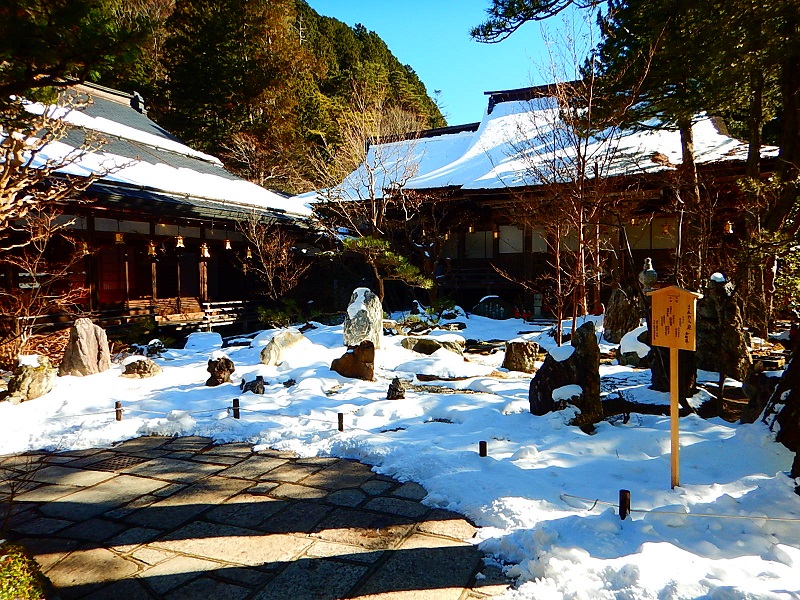 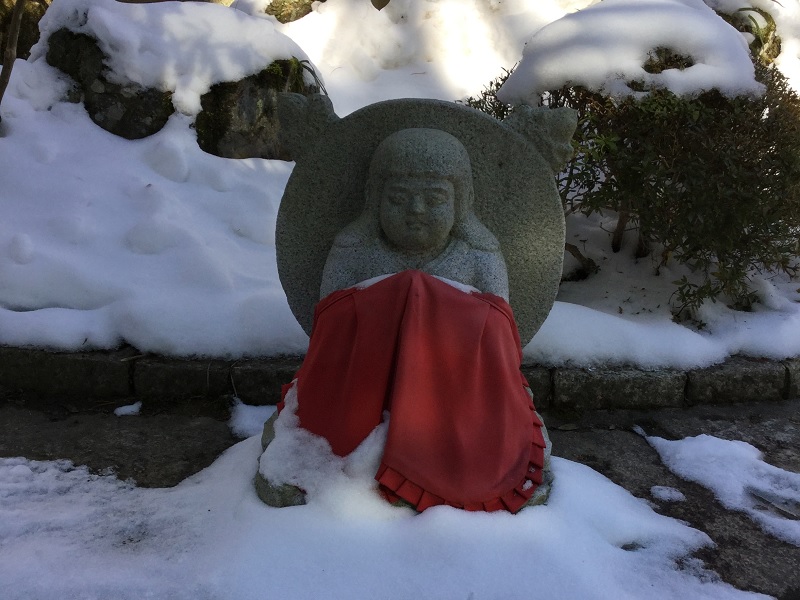 |
| URL | http://www.sanboin.com/ |
| Reservation | ー |
Henjokoin
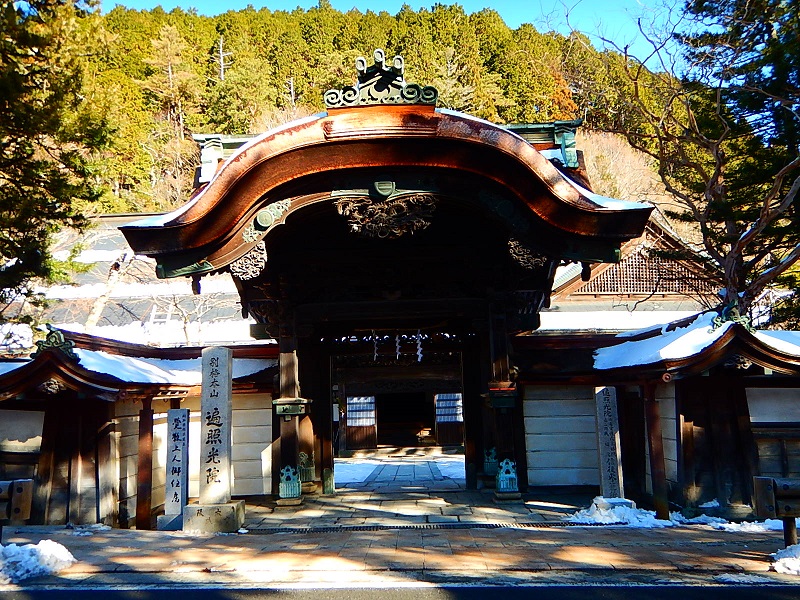
The temple gate built with the same form as “Kensyun mon” in Kyoto imperial palace
This temple which has been deeply related to the imperial family was built by Kukai in his twilight years. The temple gate was built with the same form as “Kensyun mon” in Kyoto imperial palace, its majestic appearance makes you feel heigh formality. Guest room is renewed several times, and it gives a clean and fresh atmosphere. In addition, guests can watch the the circuit style garden from guest rooms. Vegan cuisine is popular as it is delicious and has a volume. In the main hall where perfoming morning religious service, Amidanyorai statue made by Kaikei designated as an important cultural asset of the country is enshrined.
| Address | 575 Koyasan, Koya-Cho, Ito-Gun, Wakayama 648-0211, Japan |
|---|---|
| Phone number | 0736-56-2124 |
| Room | 31 guest rooms, 1 large hall, 1 medium hall |
| Capacity | 150 individual guests, 200 guests in group |
| Facilities | Main hall, Garden, Tea room, Western style toilet |
| Experience | Morning Religious Service (Buddhist ceremonies at temples), Shakyo (The hand-copying of sutras), Ajikan (The form of Shingon meditation for integrating the practitioner with the Buddha)(Reservation required) |
| Photo | |
| URL | ー |
| Reservation |
Ekoin
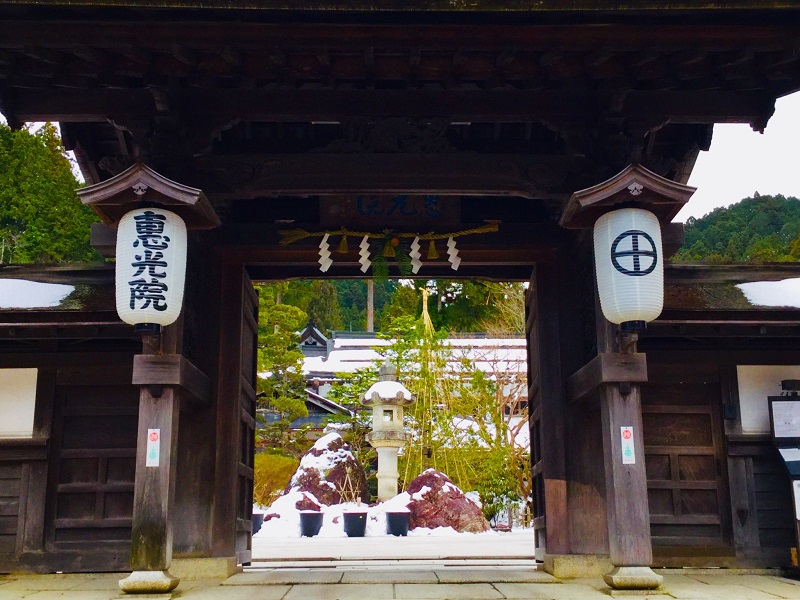
The temple where various Buddist tranings can be experienced
This temple was opened by Dousyou who is a disciple of Kukai. At the beginning of foundation, the temple’s name was written by using another chinese character, but in the Edo period, the present chinese character became to be used based on the Tokugawa shogunate’s instruction. The temple is built at the place where it is convenient to visit to Okunoin. In Bishamon hall, Bishamonten statue that it is said to be made by Kukai is enshrined, and next to the statue, Fudo Myoo statue called as “Kajitori Fudo” is enshrined. It is said that the Fudo Myoo protected Kukai and led the navigation to success when he crossed over to China as one of Kentosi’s members. The temple is also famous as the Akechi clan’s family temple, who is a warrior at the age of civil wars. As Japanese experiences, you can do Ajikan and sutra copying. In addition, you can join Okunoin night tour (fee) including interesting stories from the monk. The night tour will give you valuable experience.
| Address | 497 Koyasan, Koya-Cho, Ito-Gun, Wakayama 648-0211, Japan |
|---|---|
| Phone number | 0736-56-2514 |
| Room | 33 guest room, 1 large hall, 2 medium halls |
| Capacity | 70 individual guests, 120 guests in group |
| Facilities | Main hall, Garden, Homa hall, Ajikan training hall, Western style toilet |
| Experience | Morning Religious Service (Buddhist ceremonies at temples), Homa prayer, Shakyo (The hand-copying of sutras), Ajikan (The form of Shingon meditation for integrating the practitioner with the Buddha) |
| Photo |
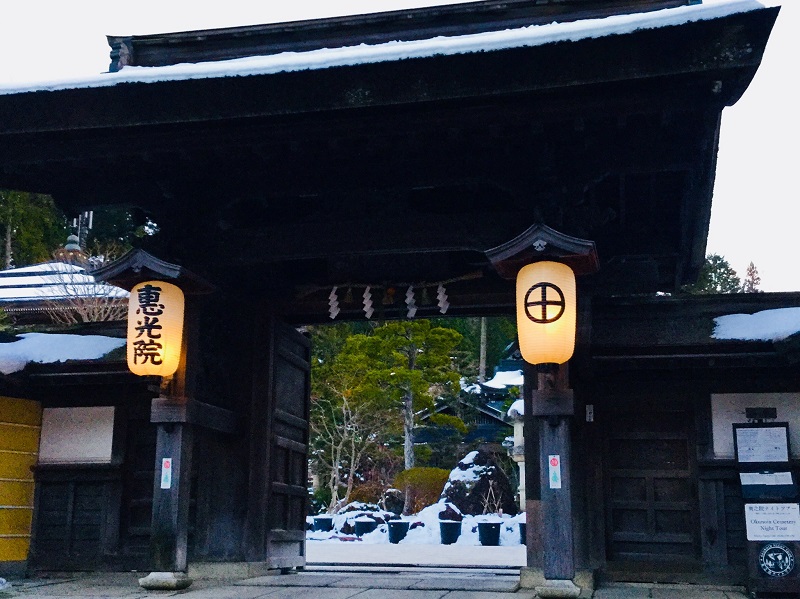 |
| URL | http://www.ekoin.jp |
| Reservation |
Kumagaiji
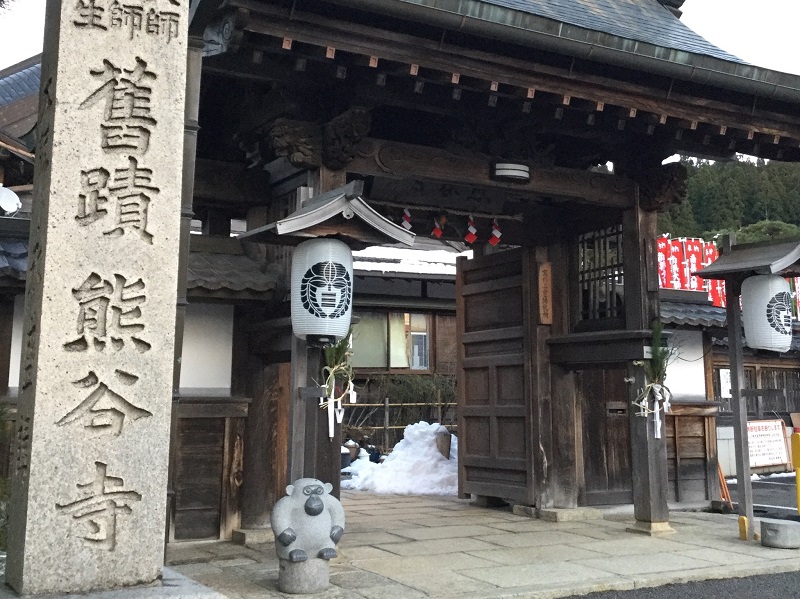
The temple associated with Honen and Shinran who are Japnese famous religiousist
Kumagaii Naozane appearing in the Heike story was said to have stayed in this temple. He changed his name to Rensho after Genpei Battle, and became a disciple of Honen who is the founder of Jodo sect. After the death of Rensho, his son ‘s Naoie made efforts to rebuilding of the temple. Minamotono Sanetomo, the Shogun, who heard this story ordered the name of the temple to be changed to Kumagai from Chishiki. Honen, and Shinran who is the founder of Jodo-shin sect have also visited this temple, so the temple manages the grave of Honen and the memorial tower of Shinran in Okunoin. The Syukubo (temple Lodging) is a place where you can spend a relaxing time at home-style with a tasteful atmosphere.
| Address | 501 Koyasan, Koya-Cho, Ito-Gun, Wakayama 648-0211, Japan |
|---|---|
| Phone number | 0736-56-2119 |
| Room | 43 guest rooms, 1 large hall |
| Capacity | 120 individual guests, 120 guests in group |
| Facilities | Main hall, Garden, Tea room, Western style toilet |
| Experience | Morning Religious Service (Buddhist ceremonies at temples), Shakyo (The hand-copying of sutras), Ajikan (The form of Shingon meditation for integrating the practitioner with the Buddha)(Reservation required) |
| Photo | |
| URL | http://www.kumagaiji.jp/jp/index.html |
| Reservation | Rakuten Travel |
Sekishoin
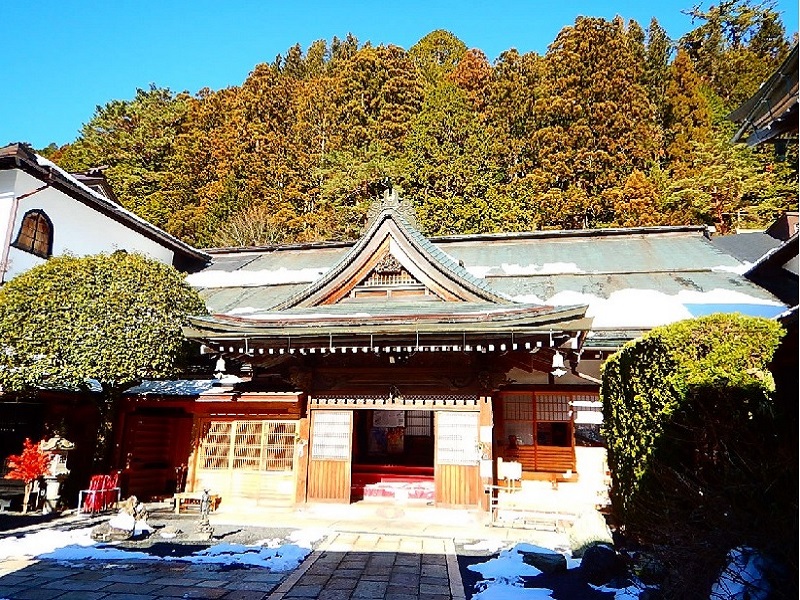
Two staues of Nio at the gate welcoms visitors
The temple was built in the middle of the Heian period by a priest named Seikai. At the time of the temple’s founding, it was called “Yamamoto Bou”, but after earning devotion from Akamatsu clan who is the samurai family in the Kamakura period, it was renamed “Sekishoin”. It is also famous as the family temple of Hosokawa clan and Arima clan. It is only here that has the statue of Nio in temple lodgings of Koyasan, and the two statue greets visitors with unique looks. The principal image of Buddha is the eleven-sided Kanzeon Bodhisattva statue. There is a wooden floor called a ‘uguisu’ or nightingale method in the temple lodging, making a sound like a song of a nightingale when walking. There is a wood carving tiger which is said to be made by Hidari Jingoro who is the sculptor of the Edo period in the large hall and it is a must-see. At the guest room, you can relux in atmosphere as same as general inn.
| Address | 571 Koyasan, Koya-Cho, Ito-Gun, Wakayama 648-0211, Japan |
|---|---|
| Phone number | 0736-56-2734 |
| Room | 60 guest rooms, 1 large hall, 1 medium hall |
| Capacity | 200 individual guests, 250 guests in group |
| Facilities | Main hall, Garden, Tea room, Western style toilet |
| Experience | Morning Religious Service (Buddhist ceremonies at temples), Shakyo (The hand-copying of sutras) |
| Photo |
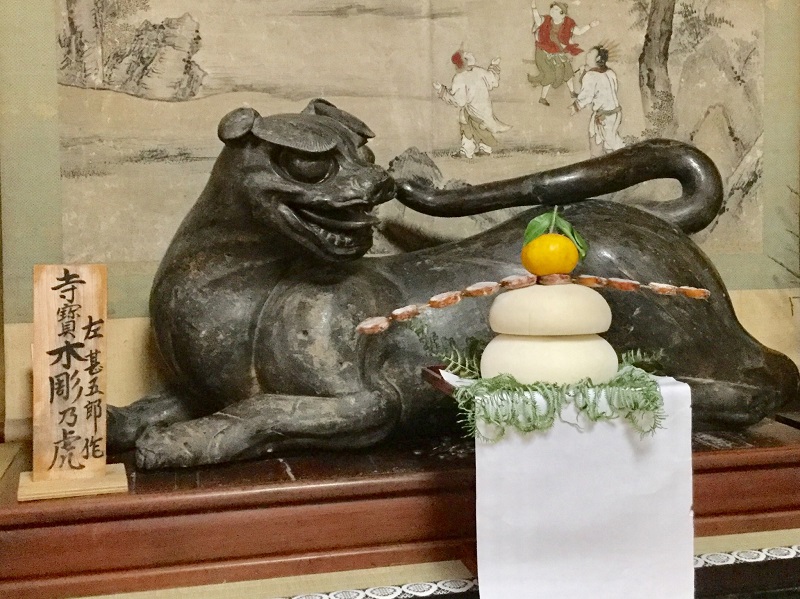 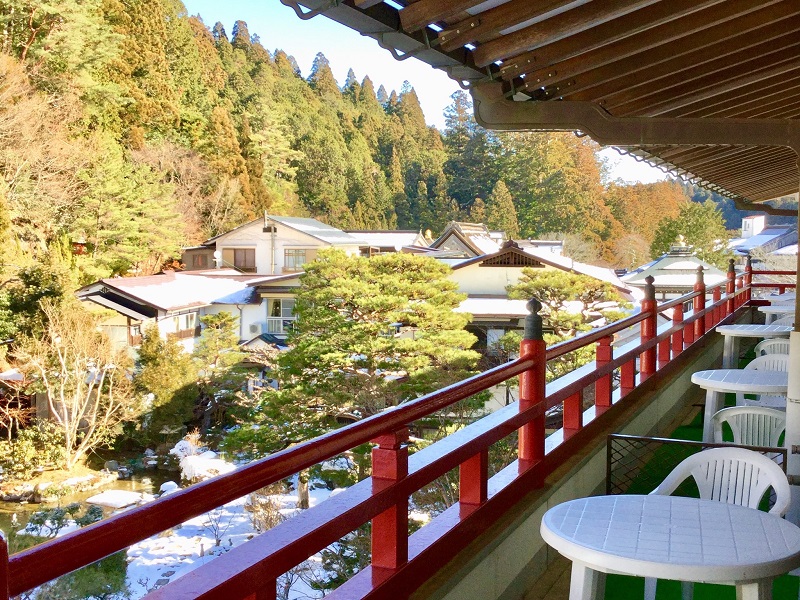 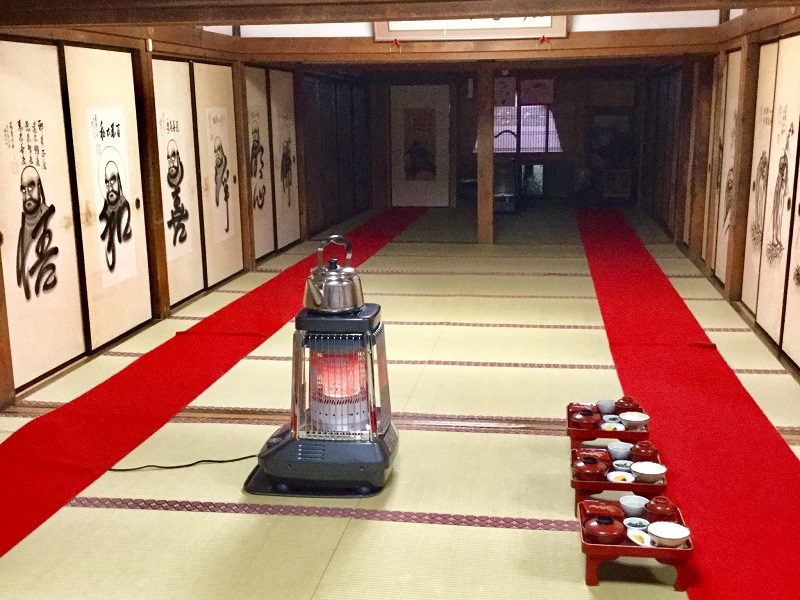 |
| URL | http://sekishoin.jp |
| Reservation |
Jokiin
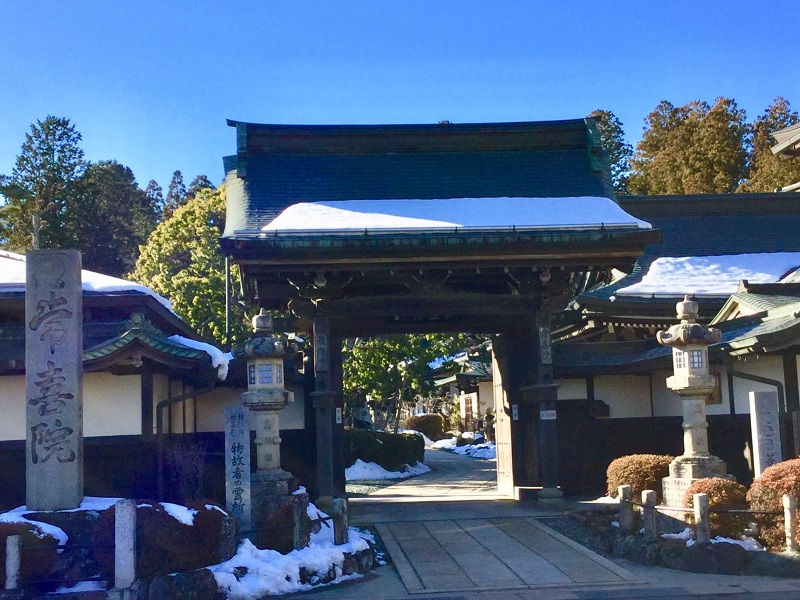
The temple that pretty “Aka Jizo” is popular with visitors
This temple is near the famous “six o’clock bells”. As a side note, the “six o’clock bells” is a bell tower on the front left front of Kongoubuji Temple, built by Masanori Fukushima, a vassal of Toyotomi Hideyoshi. Currently it is used from 6 am to 10 pm to inform even times. The temple was built by Jitue, a disciple of Kukai. As you pass through the gate, a large Jizo statue that reaches as high as 4 m will welcome visitors. Also, in the Jizo hall, Ehou Jizo which is the principal image of Buddha is enshrined. From the expression dyed red, it is also called “Aka Jizo”, and it is reputed that the figure with the left leg in front is pretty. Flowers are planted so that the garden can be enjoyed through the four seasons, and there is a log house designated as an important cultural asset of the country in the backyard. It is famous as a rare temple where you can perform Buddist training at Koyasan, and you will receive the certificate of completion at the end of the training. Guest room has a roomy space, you can relax.
| Address | 365, Koyasan, Koya-Cho, Ito-Gun, Wakayama 648-0211, Japan |
|---|---|
| Phone number | 0736-56-2321 |
| Room | 22 guest rooms, 1 large hall, 1 medium hall |
| Capacity | 60 individual guests, 80 guests in group |
| Facilities | Main hall, Garden, Western style toilet |
| Experience | Morning Religious Service (Buddhist ceremonies at temples), Shakyo (The hand-copying of sutras), Meditation (Reservation required) |
| Photo |
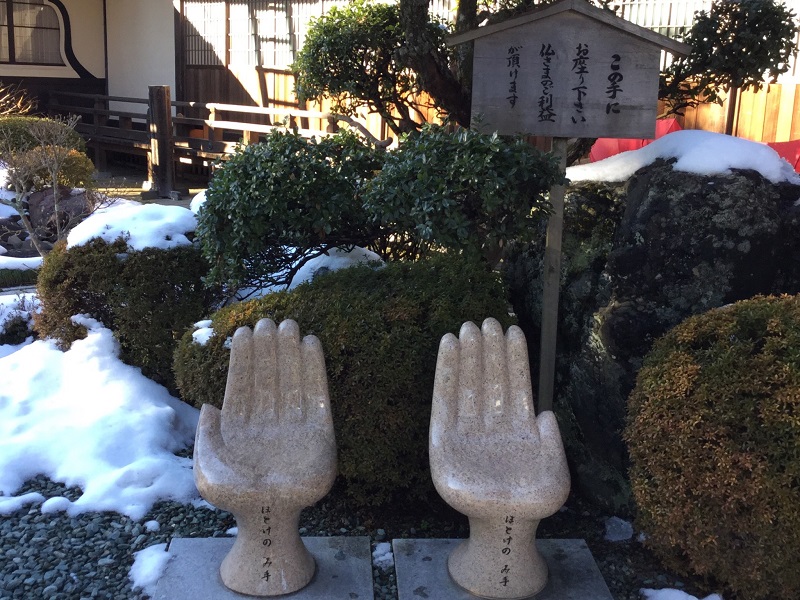  |
| URL | https://www.jo-kiin.com |
| Reservation |
Zofukuin
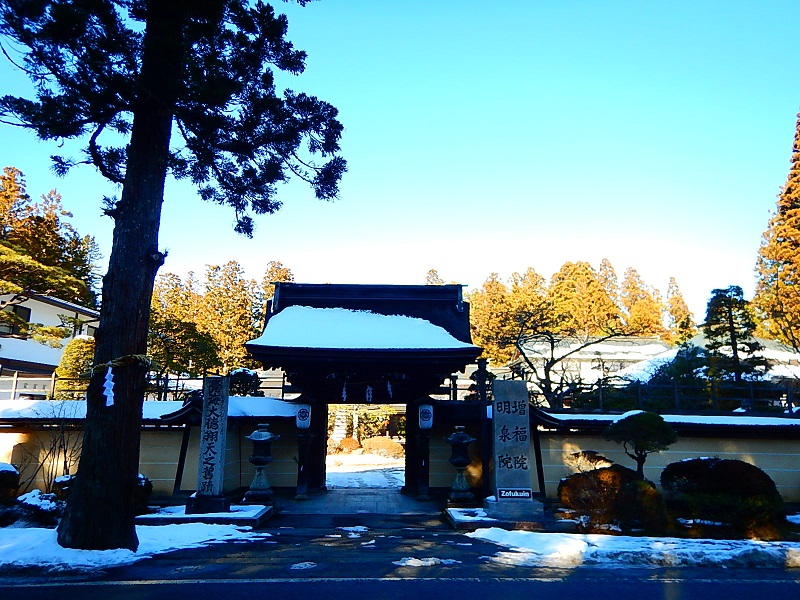
The cedar tree related to tengu legend stands in front of the gate
This temple near Reihoukan (treasure house) is said to be built by Genken who is grandson of Minamotono Mitsunaka, Chinjufu-shogun. The temple’s name is said to originate from a petition that says “we should pray for Fukuyuu Zoushin”. Three temples that once existed merged and became the current figure. In addition, there is a legend that the high priest named Kakukai changed into Tengu, and was ascended to heaven from a cedar tree. The legendary cedar tree stands in front of the gate. As for this tengu legend, Junichiro Tanizaki, Writer of the Showa era, has published a novel called “Ascension of Kakukai Daitoku”. The principal image of Buddha is Tenkyu Aizen Myoo statue. When the statue was repaired before, two writings came out from the inside. The one of them is written what the statue is about. The another one has been under investigation. As temple lodging, there are the old building which leaves a traditional feature and the new building opened in June 2017.
| Address | 339 Koyasan, Koya-Cho, Ito-Gun, Wakayama 648-0211, Japan |
|---|---|
| Phone number | 0736-56-2126 |
| Room | 25 guest rooms, 1 large hall |
| Capacity | 80 individual guests, 80 guests in group |
| Facilities | Main hall, Garden |
| Experience | Morning Religious Service (Buddhist ceremonies at temples) |
| Photo | |
| URL | ー |
| Reservation | Rakuten Travel |
Henjosonin
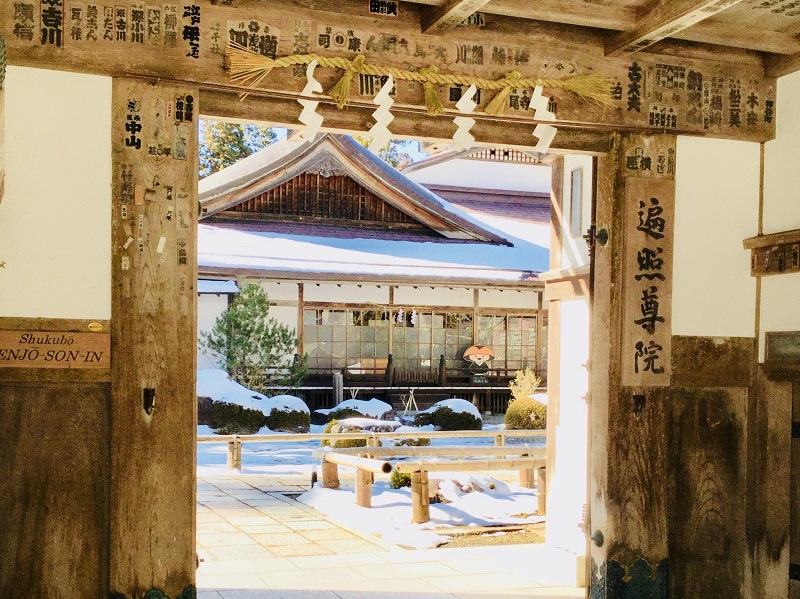
You can do the treading sand experience called “Osuna fumi”
This temple is said that Kukai disciplined when opening up Koyasan. The temple’s name comes from the name of a buddha of Kukai called “Namudaishi Henjokongou”. In the Edo period, the relationship with the Tsugaru clan became deep and developed, but it was destroyed by a big fire in 1898. The current building was rebuilt in 1945. The temple has a modaern structure such as a large hall, main halls, bathrooms, a tea drink area and a souvenir shop. As a side note, the large hall is the biggest among temple lodgings in Koyasan. More than 50 people can take the baths at one time, and the one on the first floor is made using ancient Japanese cypress, and the other on the second floor is made using Koya Maki. There is also a bathtub where natural herbal medicine is used, and it is popular as working for stiff shoulders and rheumatism. Some rooms can enjoy the inner bath. In the main hall basement, the sand of 88 places of Shikoku Pilgrimage is spread on the floor, and you can do the treading sand experience called “Osuna fumi”. It is said that there is the same benefit as actually going around 88 places when you go through the sand step one round.
| Address | 303 Koyasan, Koya-Cho, Ito-Gun, Wakayama 648-0211, Japan |
|---|---|
| Phone number | 0736-56-2434 |
| Room | 39 guest rooms, 1 large hall, 3 medium halls |
| Capacity | 80 individual guests, 162 guests in group |
| Facilities | Main hall, Garden, Western style toilet |
| Experience | Morning Religious Service (Buddhist ceremonies at temples), Shakyo (The hand-copying of sutras), Treading sand |
| Photo | |
| URL | http://www.henson583.com |
| Reservation | ー |
Yochiin
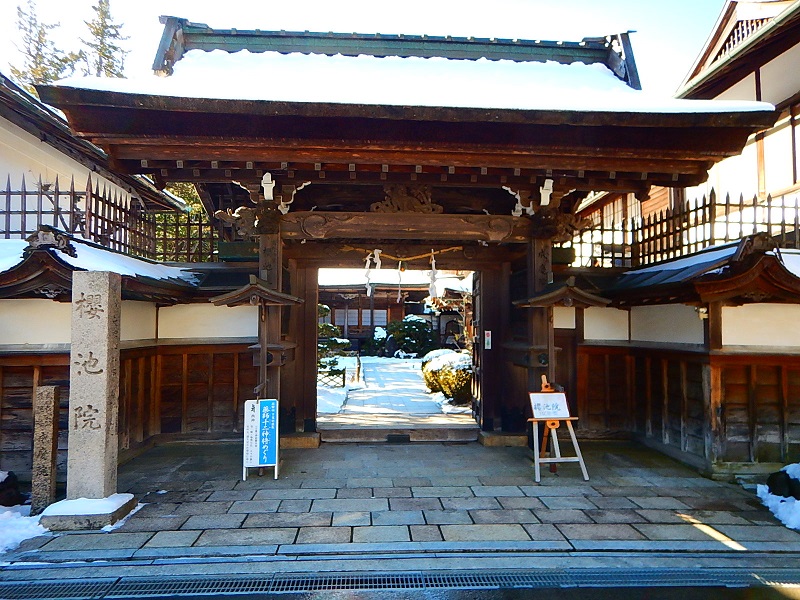
Japanese rock garden made to model on Ryoanji temple in Kyoto
The temple’s name was named “Yochiin” by Kakuhou, the fourth son of Emperor Shirakawa. After that, when Emperor Gosaga visited to the templle, he was impressed with the scene that the cherry blossoms are reflected in the pond in the garden, compose a Japanese poem. This triggered, and for the name of the temple, Chinese characters meaning cherry blossoms and ponds began to be used. The upper room has a sliding door painted with the scene that Emperor Gosaga composed the poem. In addition, this temple manages an adjacent temple named Seikeiin, which has a relationship with Shingen Takeda who is a warrier at the age of civil war, and becomes the Takeda clan’s family temple. Shingen’s mortuary tablet is enshrined in the main hall, and many materials related to Shingen is stored. There is a Japanese rock garden by Mirei Shigemori, a famaous gardener in Showa period, made to model on Ryoanji temple in Kyoto. There are two types of Buddist practices that you can experience: Syakyo (sutra copying) and Syabutu (tracing a picture of a Buddhist image). The Syabutu is to draw a Buddhist image along the underlying picture, and you can enjoy a slightly different feeling from Shakyo. Although the temple lodging is small , you will be able to experience the merit of the temple which is not in the general inn.
| Address | 293, Koyasan, Koya-Cho, Ito-Gun, Wakayama 648-0211, Japan |
|---|---|
| Phone number | 0736-56-2003 |
| Room | 20 guest rooms, 1 large hall, 1 medium hall |
| Capacity | 70 individual guests, 120 guests in group |
| Facilities | Main hall, Garden, Western style toilet |
| Experience | Morning Religious Service (Buddhist ceremonies at temples), Shakyo (The hand-copying of sutras), Ajikan (The form of Shingon meditation for integrating the practitioner with the Buddha), Shabutsu (The tracing a figure of Buddha) |
| Photo | |
| URL P |
https://yochiin.com |
| Reservation | Rakuten Travel |
Sojiin
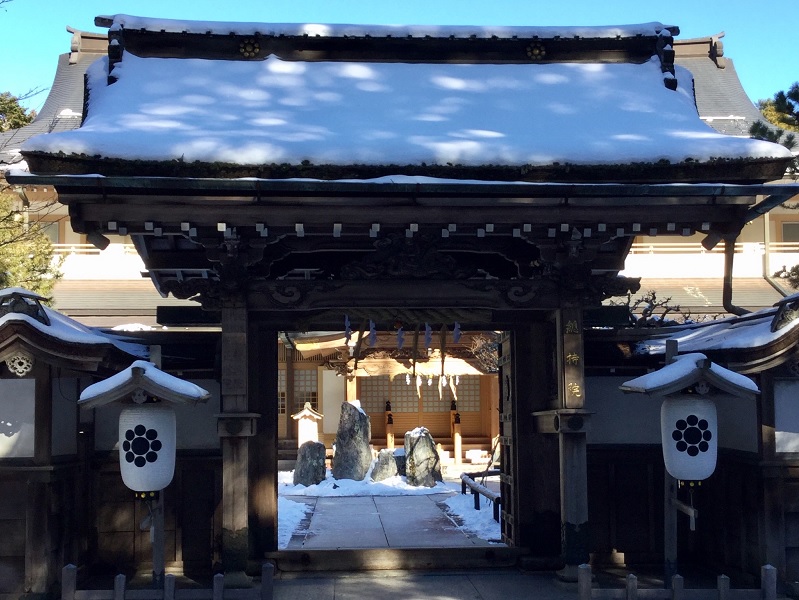
The white wisteria said to be 1100 years old will greet visitors
The temple was built in the Heian era by Gyoe, the 28th head priest of Koyasan. Previously the temple was in the precinct of Danjogaran, but later was moved to the west of Kongobuji temple. As you go through the gate, a white wisteria said to be 1100 years old will greet visitors. Furthermore, you can enjoy the beautiful scenery throughout the year, with a large garden that is a borrowed landscape of the mountain of the imperial mausoleum of Imperial prince Kakuhou. Barrier-free convenient for wheelchair movement is established in the temple lodging, making it friendly to the elderly and disabled people. The Shojin ryori (vegetable food) is made of seasonal ingredients, and it is reputable for its deliciousness. In 2012, it was awarded the “Food Hygiene Excellent Facility” by the Japan Food Sanitation Association. Guests can experience Syakyo (sutra copying) and Syabutu (tracing a picture of a Buddhist image).
| Address | 143 Koyasan, Koya-Cho, Ito-Gun, Wakayama 648-0211, Japan |
|---|---|
| Phone number | 0736-56-2111 |
| Room | 13 guest rooms, 1 large hall |
| Capacity | 60 individual guests, 60 guests in group |
| Facilities | Main hall, Garden, Western style toilet, Elevator |
| Experience | Morning Religious Service (Buddhist ceremonies at temples), Shakyo (The hand-copying of sutras) |
| Photo |
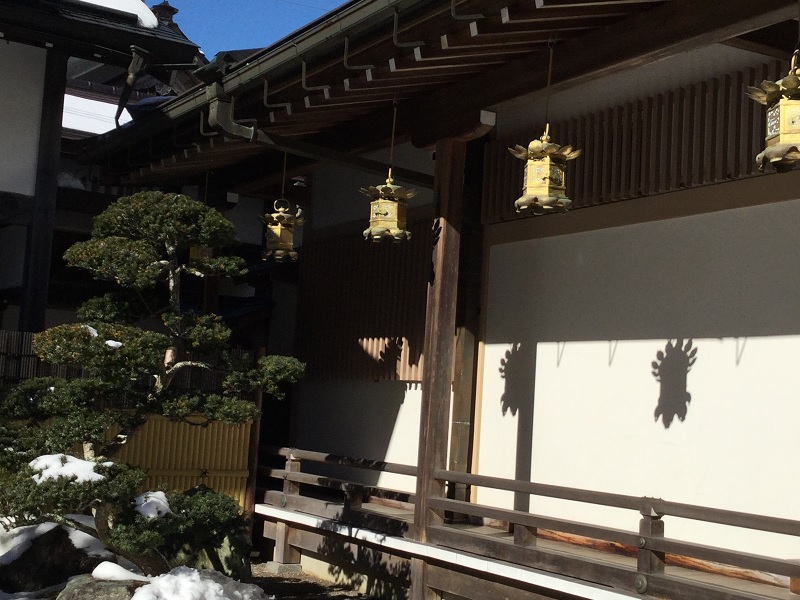 |
| URL | http://www.soujiin.or.jp |
| Reservation |
Saizenin
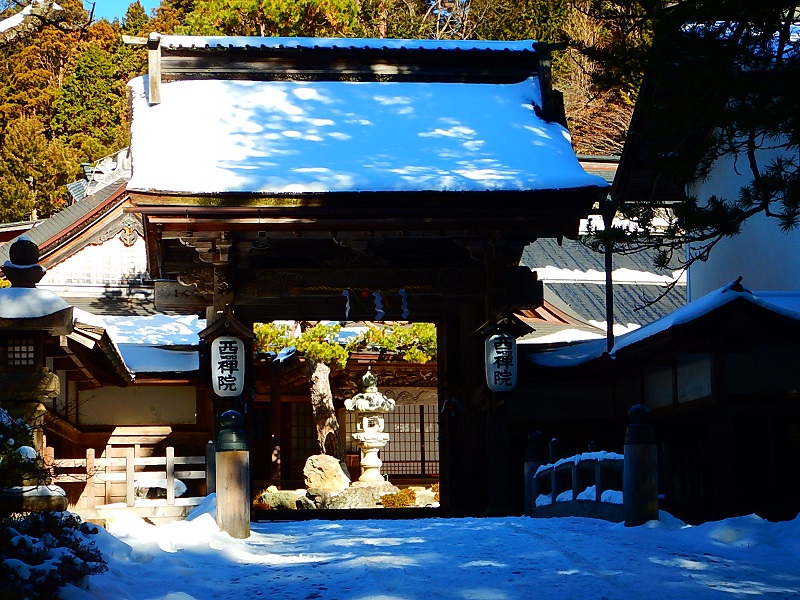
The temple where Konosuke Matsushita, Panasonic’s founder, stayed for a long time
This temple was built at the place where Shinran, the founder of Jodo Shinshu, made a thatched, and practiced Buddhism. The principal image of Buddha is Amida Nyorai statue that is said to be made by Shinran. The temple is near Danjogaran and is convenient for sightseeing. In the precinct, there are three gardens designated as a registered monument of the country, made by Mirei Shigemori, a famaous gardener in Showa period. There is the painting on a sliding door by Isyu Kikuta, one of four famous painters of Sendai clan at the upper room. It is also famous as the temple where Konosuke Matsushita, Panasonic’s founder, stayed for a long time, and if the schedule matches, you can book the room where he stayed. In the precinct, there is a stone lantern basket donated by Mr. Matsushita.
| Address | 154 Koya-San, Koya-Cho, Ito-Gun, Wakayama 648-0289, Japan |
|---|---|
| Phone number | 0736-56-2411 |
| Room | 18 guest rooms, 1 large hall, 1 medium hall1 |
| Capacity | 50 individual guests, 60 guests in group |
| Facilities | Main hall, Garden, Tea room, Western style toilet |
| Experience | Morning Religious Service (Buddhist ceremonies at temples), Shakyo (The hand-copying of sutras), Ajikan (The form of Shingon meditation for integrating the practitioner with the Buddha) |
| Photo | |
| URL | http://www.koya.or.jp |
| Reservation |
